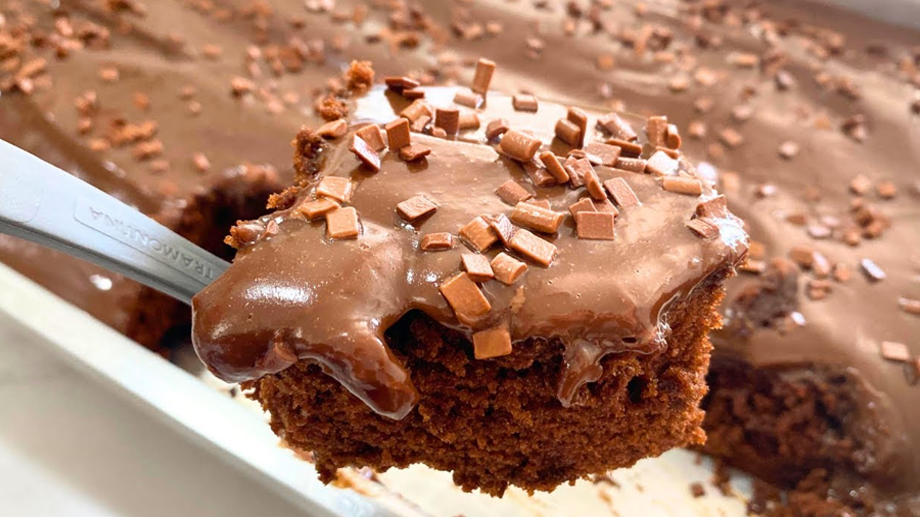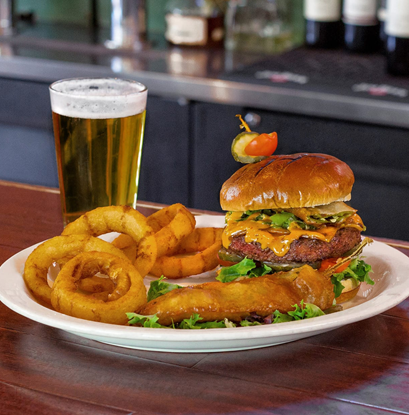
A part of the Southern diet for nearly 300 years, it doesn’t matter if you call them Black Eye, or Black Eyed Peas, this is a great side dish for just about any meal. You’re certain to find them on almost every Southern table on New Year’s Day, along with a pot of collards and skillet baked cornbread. But, you don’t have to wait until then, this quick and easy recipe will let you enjoy black eye peas anytime.
Fresh black eye peas are available during the summer months here in the South. Local farms let you pick your own by the bushel or peck if you’re ambitious enough to do such. Mama and daddy use to pick’em from our own garden when I was a kid. Afternoons and evenings were then spent sitting on the front or back porch with a big old wash pan of peas in your lap and an empty bushel basket by your side to throw the hulls in after you shelled them.
I never could handle much of the shelling of peas or butter beans either one. I bite my fingernails and you need a bit of fingernail to slip into the pea hull and get them started. You sort of break open one end with your thumbnail, then once you have an opening, you run your thumb down inside the hull and the peas pop out into your pan. With black eye peas, you’d get about 8-12 individual peas from each one. That means you have to do a good amount of pea shelling to get enough for Sunday dinner, even more if you plan on freezing or canning them.
Chances are, there was a big old glass of ice cold Sweet Tea sitting at the foot of your chair or on a small side table. The conversation was always good as the adults talked about family, friends and days gone by for them. If it was night time, the darkness would sparkle all across the yard with lightning bugs fluttering all around. We didn’t have air conditioning so it was cooler to be outside than inside even after the sun had gone down.
Today, many of the larger roadside produce stands have electric pea shellers. They can shell a bushel in hardly any time at all for you. Some will have them already shelled and in plastic bags inside a refrigerator ready for sale. Still, if you watch them while they run the machine, conversations seem to drift back to how it “use-to-be” when shelling them by hand. Ahhh…the joy of modern day inventions.
Please Note: Dry peas from the grocery store will need to be soaked at least 6 hours or overnight. Plan ahead.
Now, Let’s Get Cooking!

You’ll need these ingredients. I’m using a piece of hog jowl for seasoning. You could also use bacon grease, fat back, ham hock or streak-o-lean. To really be southern…you’ve got to add some pig. (Smile) Note that I placed a couple of slits in the hog jowl meat. You’d want to do the same with a piece of fatback if you use that. It just seems to help it cook better.

I’m using dried black eye peas to prepare my dish. You can purchase them in 1-lb. bags at most any grocery store. First thing you’ll need to do is place them in some type of large flat dish or on a baking pan so you can sort through them. Most dried beans are mechanically processed these days and you’ll need to sort through them looking for any small pebbles, sticks or hard objects that might be mixed in with them. Spread them around on the plate or run them through your hand until you’re sure they are free of anything you don’t want to bite into later.

Now, place them in a colander or large bowl and wash them real good with clean water. You need to get off any dirt or dust that might be on them.

Place the washed peas into a large pot and cover them with a couple of inches of cool water. The dry peas need to soak for at least 6 hours or preferably overnight to rehydrate them. Some folks think you soak them in order to reduce the gas they may cause. That may be true to an extent, but truth is, beans are dirty. Soaking them just helps clean off the “field dust” they have accumulated. Water can’t be used during the picking and processing steps needed to get them from farm to table. Any water added might cause them to mold or start sprouting so the dirt isn’t washed off in the packaging process. Soaking them will also reduce the cooking time by about 70%. Soaking allows the peas to absorb the water they need to cook evenly and not break open. So, plan ahead, soak them overnight and be done with it. It’s the Southern way.

The next morning, you’ll find your peas puffed up and ready to cook. You’ll also probably see some “floaters” in your pot. As the name implies, floaters are peas that you’ll see floating around on the surface of the water. These are usually peas that for whatever reason didn’t absorb any water and will be dry if left to cook. Just scoop them out with your hand or a slotted spoon and toss them in the trash. You don’t have to over obsess with this because just about any time you stir them around, you’ll find a few more. The really bad ones will be the first one’s you see after soaking them and I suggest that you remove those. Look at my photo. See how the water has turned dirty looking? We’ll pour that off.

Pour the soaked peas out of your pot and back into your colander. While you’ve got them in there, go ahead and rinse them under some cool running water. Swish them around to remove any dirt or dust that might still be on them.

Can you tell the difference in my before and after pictures? The dry beans are on the left and the soaked overnight beans are on the right. Look closely at the space up the side of the colander and maybe you can see how they increased in size after absorbing the water overnight. Cool huh?

Fill a large pot about half full of water and bring it to a rolling boil over medium-high heat. Drop in your pork meat seasoning of choice if using such. Reduce the heat down to medium and let the pork simmer for about 30 minutes to give it a head start on the cooking process. As stated, I’m using hog jowl in my recipe and it’s a bit salty. Peas require a lot of salt, but we’ll be careful about adding more at the end of the cooking process to avoid getting them too salty.
If you’re using bacon grease in your recipe, you can eliminate this part and save yourself the extra time. You’ll add the bacon grease later.

After the pork has cooked for about 30 minutes, carefully add the peas into the pot. That’s hot water so don’t splash yourself.

Let the peas return to a slight boil, then reduce the heat to medium-LOW. You want to cook them low and slow for about 45 minutes or longer. If they are cooking too fast, the water will evaporate out. You can add more water if needed but it tends to weaken the “broth” somewhat. If adding water, add HOT water from the faucet.

After about 45 minutes, remove the pork, set aside and let it cool.
(Note: If you’re using bacon grease instead of a piece of pork, now would be a good time to add it after the peas have cooked some.)

Now, add 1-Tablespoon of sugar.

Add 1-teaspoon of black pepper.
At this point, you should stir them well and taste them. The type of pork seasoning that you use will determine how much additional salt, if any, that you will want to add in the next step. You may not need to add any. It’s just up to you and your personal taste.

Add a teaspoon of more salt if needed. Cooking is flexible so adjust them to suit your family’s needs and desired tastes. Beans can soak up some salt, so add more gradually, stir well, then let cook for another minute or two and taste again. Should you get it a little too salty, add some more hot water and that should help.

Chop up about half a medium size onion. Again, more or less depending on your taste.

Chop up your hog jowl if you’re using it. Hog jowl has a good amount of fat. Fatback is all fat. Some folks like to chew it, but I’ve never acquired a taste for it myself. I removed most of the fat from the cooked hog jowl and chopped up the remaining meat sections. You’ve already got the flavor out of the fat as it cooked so it isn’t necessary that you add it back into the pot. The meat of the hog jowl is rather tasty so I chopped it up and will add it back to the pot of peas.

Add the chopped onion and pork into the pot of peas. Stir well.

If your black eyes appear a little thick or creamy at this point, you may want to add about a cup of hot water. Just stir it all together well and let the onions cook until they become translucent in color. When the onions are fairly clear and the peas are done to your liking, they are ready to serve. It’s best not to cook them down to mush. They can overcook if you don’t watch them. Cooking times will vary as with any recipe, just keep testing the beans until they are tender but not mushy.

Serve yourself up a bowl along with some “fried” hog jowl. Oh…and a piece of cornbread.
Enjoy!!!



